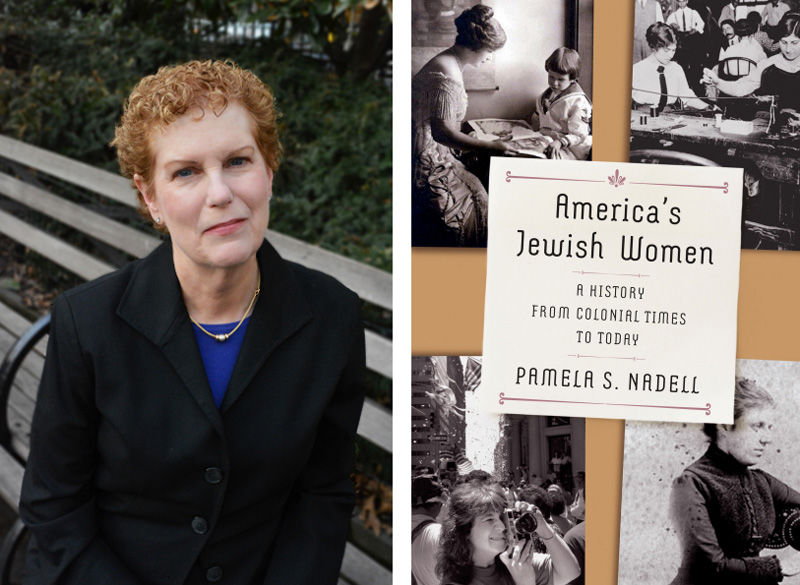Book offers fascinating look at lives of American Jewish women
Published August 1, 2019
“America’s Jewish Women: A History from Colonial Times to Today” by Pamela S. Nadell, 336 pages, W. W. Norton & Company, $28.95
Looking for a combined history of American Jewish women and American Judaism? You can find both in “America’s Jewish Women: A History From Colonial Times to Today,”written by Pamela S. Nadell, the Patrick Clendenen Chair in Women’s and Gender History and director of Jewish studies at American University.
Nadell has attempted to answer the question: “What does it mean to be a Jewish woman in America?” The answers are many and varied, but the common thread connecting all the women profiled in this book is their desire to repair the world, tikkun olam.
Nadell divides her book chronologically into five chapters, each representing a time period. Chapter one deals with what the author calls “the colonial Jewesses;” chapter two is a broad overview of the 19th century domestic mothers; Nadell designates chapter three “the turn-of-the-century immigrants;” chapter four emphasizes the mid-20thcentury semi-assimilationists,” and the concluding chapter deals with what today’s readers would consider “their contemporaries.”
Only once does the author deviate from her chronological order. In the book’s prologue Nadell discusses both Grace Mendes Seixas Nathan and her great-granddaughter Emma Lazarus, the famed author of “The New Colossus,” in the same chapter, even though Emma was born a century after her great-grandmother. Nadell stated that for years when historians were primarily men, they assumed that mostly men made history. “Therefore,” asserts Nadell, “a woman like Grace Nathan is mentioned by historians only because her husband was an important colonial merchant. Women like Grace Nation who have lived in the shadow of this nation’s liberties, have earned their places in history.”
This book is not a collection of biographies, but a narrative of Jewish women, who by various means, changed their country. The author has woven together the stories of such luminaries as labor activist Bessie Hillman and Supreme Court Justice Ruth Bader Ginsburg with scores of other women — wives, mothers, activists and workers who appear in this book.
Almost every book has some flaws and Nadell’s is no exception. The author gives much attention to women who are actively fighting for the rights of both male and female workers, as well as actively participating in areas such as promotion of education and political rights, the battle for women’s suffrage, the right to join unions and Zionism. However, she gives scant attention to other areas such as entertainment and the arts. For example, Barbra Streisand received only a one-line mention when Nadell labeled her “an American Jewish filmmaker” for the film “Yentl.”
Nadell is successful when she provides a captivating portrait of American Jewish women. Her subject matter, however, is slanted toward Reform, and even secular Jews. When she discusses Jews in the modern area, there is practically no examination of Orthodox or even Conservative Jewish women’s lives.
Any flaws in this book are absolutely outweighed by its outstanding features—a compelling narrative, readability, varied use of primary sources and its swift pace—all of which make this a must-read. Suggestion: St. Louis readers may especially find quite interesting Nadell’s segment on a Moravian-born immigrant Rosa Fassel Sonneschein, the wife of Rabbi Solomon Sonneschein, who served at Congregations Shaare Emeth and Temple Israel in St. Louis in the late 1800s. Rosa founded the women’s magazine American Jewess.
Nadell’s book is dynamic, interesting and very readable. Readers are receiving a history lesson without really realizing it. The book is also authoritative, comprehensive and concise, and is extremely well documented with both primary and secondary sources. The author has successfully shown how a group of vocal and passionate women, numerically small, could make such a tremendous impact on our nation. This book should inspire other women that they also have the power to change their destiny.














